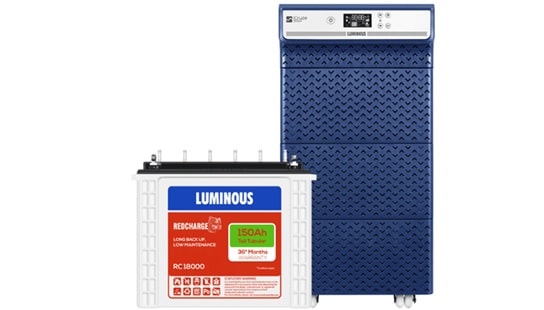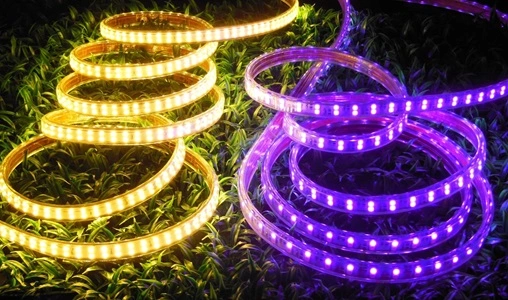Reliable power solutions play a pivotal role in sustaining the functioning of our modern society, supporting everything from essential infrastructure to daily conveniences. In an era heavily reliant on electronic devices and technology, uninterrupted power supply is imperative for various sectors such as healthcare, communication, and manufacturing. Among the key components contributing to this reliability are inverters, which play a crucial role in providing a seamless power supply.
Inverters act as power converters, transforming direct current (DC) into alternating current (AC), ensuring compatibility with most electrical appliances. This capability allows them to bridge the gap during power outages, serving as a crucial backup system that kicks in seamlessly to maintain continuous electricity flow. Whether in residential, commercial, or industrial settings, the role of inverters in maintaining a stable power supply is indispensable.
In this blog, we will discuss the tips to choose between the different inverter set prices and the factors affecting inverter set prices.
Image Source: Luminous
Tips to Choose Between the Different Inverter Set Price
Choosing the right inverter set involves considering different factors to ensure it meets your specific needs. Here are some tips to help you make an informed decision when comparing different inverter set prices:
- Power Requirements: Determine your power needs, i.e., the total wattage of the appliances and devices you plan to run on the inverter. Choose an inverter set with a capacity that can handle your power requirements comfortably.
- Type of Inverter: Decide between pure sine wave and modified sine wave inverters. Pure sine wave inverters provide a clean and stable power output suitable for sensitive electronics. Modified sine wave inverters are more economical but may be better for specific devices.
- Battery Type: Consider the type of batteries the inverter set uses. Lead-acid batteries are common and affordable, while lithium-ion batteries are more expensive but offer advantages such as longer lifespan, lighter weight, and faster charging.
- Inverter Efficiency: Check the efficiency rating of the inverter. Higher efficiency means less energy loss during the conversion process. Look for inverters with efficiency ratings above 90%.
- Brand Reputation: Research and choose reputable brands known for producing reliable and durable inverters. Read customer reviews and testimonials to get an idea of the performance and longevity of the product.
- Warranty and Support: Look for inverter sets that come with a warranty. A more extended warranty period often indicates the manufacturer’s confidence in their product. Additionally, check the availability of customer support and service centres.
- Safety Features: Ensure the inverter set has safety features such as overload protection, overheat protection and short circuit protection. These features help prevent damage to the inverter and connected devices.
- Ease of Installation: Consider the ease of installation, especially if you plan to set it up yourself. Some inverters come with user-friendly interfaces and clear installation instructions.
- Budget Considerations: While price is an essential factor, it shouldn’t be the sole consideration. Compare prices while keeping in mind the features and quality offered by each inverter set. Sometimes, a slightly higher upfront cost may be justified by better performance and reliability.
- Future Expansion: Think about future needs. If you anticipate expanding your power requirements, choose an inverter set that allows for easy scalability by adding more batteries or inverters.
Factors Affecting Inverter Set Price
Various factors can influence the price of an inverter set, and it’s essential to consider these elements when evaluating the cost of such equipment. Here are some key factors that can affect the price of an inverter set:
- Capacity/Power Rating: The power rating or capacity of the inverter set, measured in kilowatts (kW) or megawatts (MW), significantly influences the price. Higher-capacity inverters designed to handle more significant loads will generally cost more than lower-capacity models.
- Technology and Features: The type of technology used in the inverter, such as pure sine wave or modified sine wave, can affect the price. Inverters with advanced features like built-in surge protection, grid-tie capabilities, or battery storage integration may also be more expensive.
- Efficiency: Inverters with higher efficiency ratings are often priced higher. Higher efficiency means that a more significant percentage of the DC power from the source is converted into usable AC power.
- Brand and Reputation: Well-established and reputable brands often command higher prices due to their track record of reliability and performance. Brand reputation can influence customer trust and willingness to pay a premium.
- Build Quality and Durability: The construction quality and durability of the inverter set play a role in determining its price. Inverters designed with robust materials and manufacturing processes may have a higher upfront cost but could offer better long-term reliability.
Evaluating Inverter Set Beyond Costs
Going through the diverse landscape of inverter sets prices is an essential step in securing a reliable power solution. The quest for a one-stop power solution demands meticulous consideration of not just the cost but also the efficiency, durability, and brand reputation of the inverter set.
It is essential to make an informed decision that aligns with your power needs. For a seamless and trustworthy choice, consider exploring the wide range of inverter sets offered by Luminous. With its commitment to innovation and excellence, Luminous provides a compelling call to action for those seeking a robust power solution.


